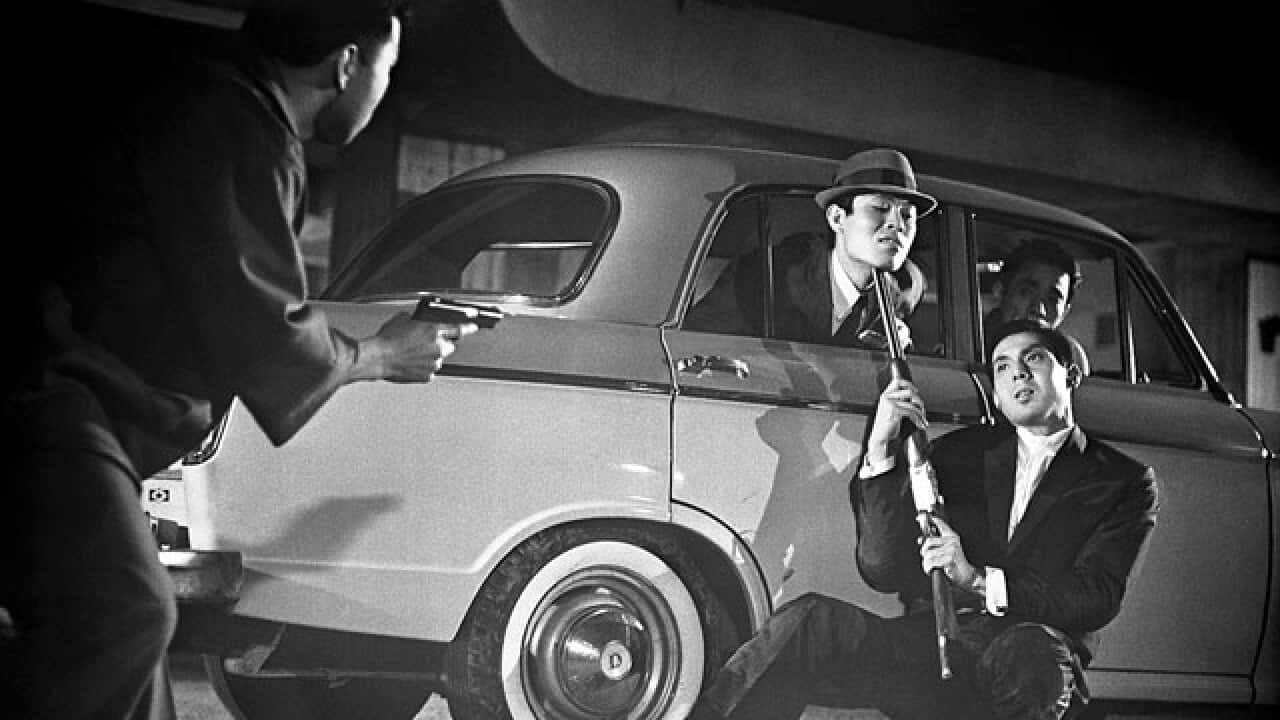The corporate history of the Japanese studio giant Nikkatsu is decidedly chequered with both extremes of the ethos of profit and loss, but its creative output holds a very special place in international cinema history. From its highly-respected beginnings producing popular new versions of traditional stories, its down-in-the-gutter period tapping into the rebellious youth market, to its current status as profitable purveyors of exploitation schlock and soft-core pornography, Nikkatsu has been a defiant entity in Asian cinema.
Nikkatsu launched in 1912, and along with US studio Universal, is considered the oldest production company in existence. Nikkatsu – its name an amalgam of Nippon KatsudÅ Shashin, or Japan Cinematograph Company – was the merged conglomerate of four start-ups: Yoshizawa ShÅten, Yokota ShÅkai, FukuhÅdÅ and M. Pathe. The newly-minted operation found public favour by utilising traditional narrative methodology with the shimpa films, contemporary dramas made in its large and refurbished studio base at Asakusa.
It was a time of great prosperity for Japanese cinema and Nikkatsu and its rival, the more innovative Shochiku Studio, created vastly different types of films. But the great earthquake of 1933 immeasurably altered the course of the country's film sector, and Nikkatsu, which had fostered the careers of early-century filmmaking greats such as Shozo Makino (Jitsuroku Chushingura/True Record of the 47 Ronin, 1928), was forced to reassess its output in the face of increasing international competition and a changing national mood.

The war effort would effectively shut the studio down from 1941 until 1954. After a bitter industry feud that saw Nikkatsu's status and marketplace worth undervalued and its industry influence undermined, the brand survived as a distribution company (its first international hit was in 1951 with Ichikawa Kon's The Harp of Burma) but ceased all production until Takizawa Eisuke's Chuji Kunisada and Chiba Yasuki's Thus I Dreamed in 1954. This phase in Nikkatsu's history would soon define a new wave of popular Japanese cinema that captured the spirit of the post-war nation. At a time when old traditions were being usurped by the influences of the conquering American forces and world cinema reflected a new order of sorts, Nikkatsu released Takumi Furukawa's Season of the Sun and Ko Nakahira's Crazed Fruit (pictured below, right). It was 1956, and the unbridled film movement known as taiyokozu was born.

Also referred to as the 'Sun Tribe' films (and, later, the subsequent subsets 'Speed Tribe' and 'Jazzbo'), taiyokozu films were works that infuriated the establishment but which addressed the feelings of rage and disenchantment in young Japan. With the youth getting their first taste of the West's free-spirited 'rock-n-roll' lifestyle, several Nikkatsu films aimed at this audience – Inoue Umetsugu's The Storming Drummer (1958), Masuda Toshio's Crimson Seaport (1958), Koreyoshi Kurahara's The Warped Ones (1960) and Black Sun (1964) – were huge hits. (These examples are only a small sampling; Nikkatsu was churning out up to six youth-oriented films a year at the height of the popularity.)


Nikkatsu declared bankruptcy in 1993, applying to the Japanese government for assistance under the country's 'Corporate Reorganization Act'. Three years later, it was acquired by video-game giant Namco; in 2005, a holding company named Index, a specialist in mobile content, took control. In recent years, production has started up once again, primarily on genre works such as Seiji Chiba's and Yuji Shimomura's Alien vs. Ninja (2010) and Sion Sono's Cold Fish (2010). Signifying that the next incarnation of the never-say-die Japanese giant may be just around the corner, Nikkatsu announced last month that action-maestro John Woo will direct Day of the Beast, a remake of the studio's 1963 hit Youth of the Beast (pictured, top). Woo told trade paper Screen, “This remake is my salute to the great films and filmmakers produced by Nikkatsu's 100 years in cinema history. It is exciting for me as well as an honour.”
The National Film and Sound Archive's season on Nikkatsu's centenary starts this Saturday. For more information visit the official website.
Share
